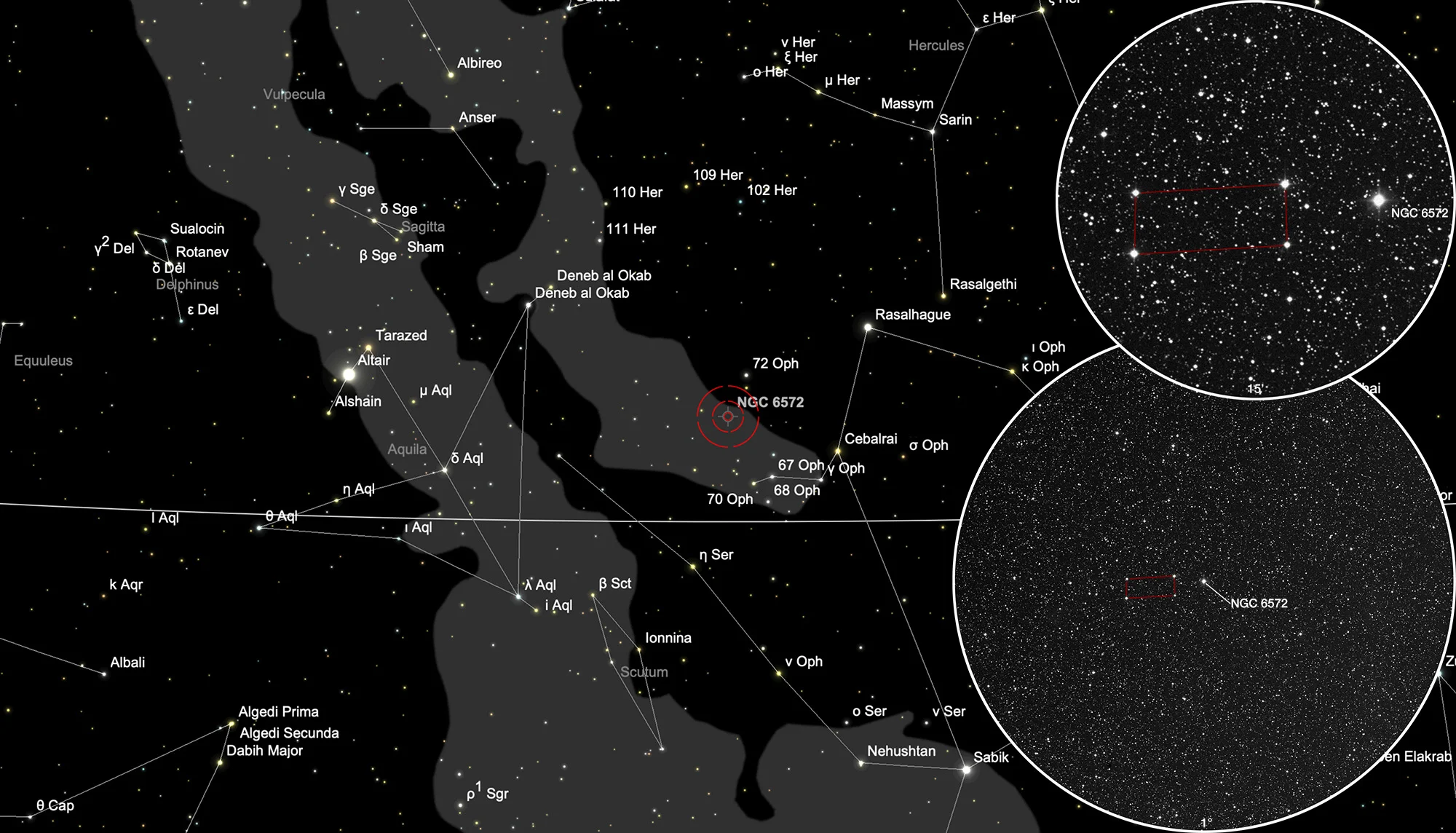Blue Racquetball (NGC 6572)

History
This plantetary nebula was discovered on 18th July 1825 by the German born astronomer Friedrich Georg Wilhelm Struve using the 9.6 inch f/17.8 Fraunhofer refractor at Dorpat Observatory in Russua (today called Tartu in Estonia). [274]
Physical Properties
NGC 6572 is a pretty young planetary nebula, estimated only a few thousand years old. As a result the glowing gas is still quite concentrated, which explains why it is abnormally bright. It expands at a speed of around 15 km/s. [534] The distance is estimated to 1736 pc. [145]
| Designations | PN G034.6+11.8: NGC 6572, PK 34+11.1, ARO 7, VV 159, VV' 370 |
| Right Ascension (J2000.0) | 18h 12m 07s |
| Declination (J2000.0) | +06° 51' 25" |
| Dimensions | 10.8" (optical), 8." (radio) |
| Distance | 0.42 kpc |
| Radial Velocity | -8.5 ± 0.4 km/s |
| Expansion Velocity | 16.0 (O-III) 16. (N-II) km/s |
| C-Star Designations | AG +6 2201, AG82 296, BD +06 3649, EM* CDS 964, GCRV 10650, HD 166802, PLX 4174 |
| C-Star Magnitude | B: 13.10 |
| C-Star Spectral Type | Of/WR(H) |
| Discoverer | STRUVE 1825 |
Finder Chart
The planetary nebula NGC 6572 can be found in the constellation Ophiuchus. The best time for observation is February to December.
Visual Observation
400 mm Aperture: In the 21 mm Ethos, PN NGC 6572 appears as a slightly bluish spot, somewhat larger than the surrounding stars. At higher magnification (13 mm Ethos), fainter, elongated extensions are recognisable. The fainter ears are clearly visible in the 9 mm Nagler, standing out from the brighter, bluer central region. The central star is easily recognisable in calm air. — 400 mm f/4.5 Taurus Dobsonian, Ahornalp, SQM 21.2, 30. 5. 2025, Bernd Nies
